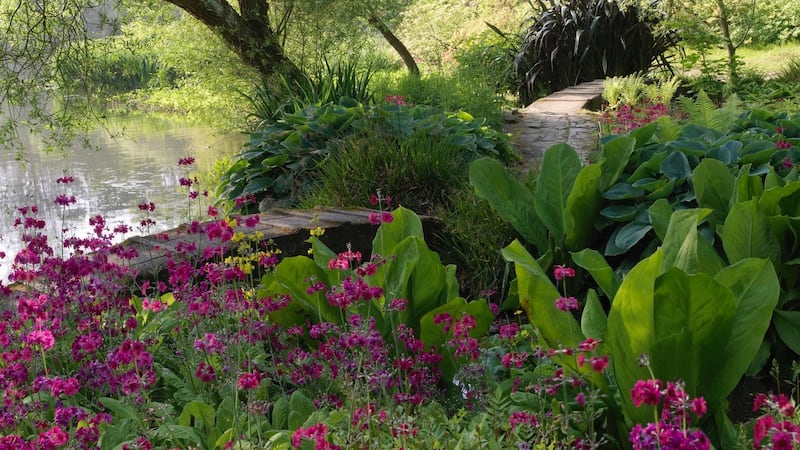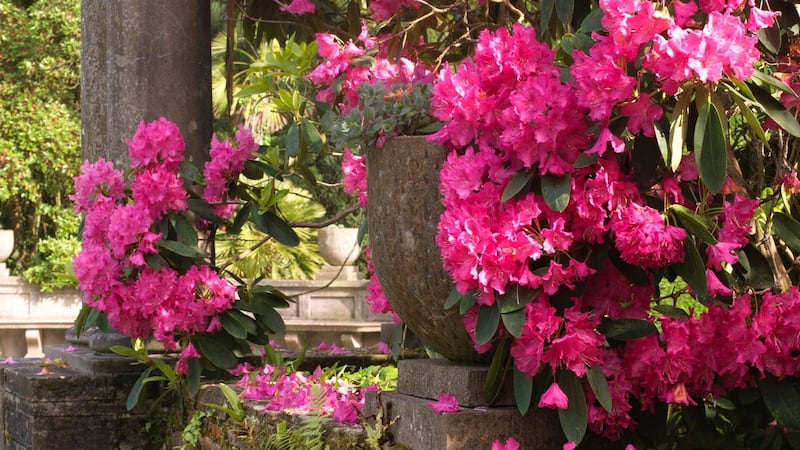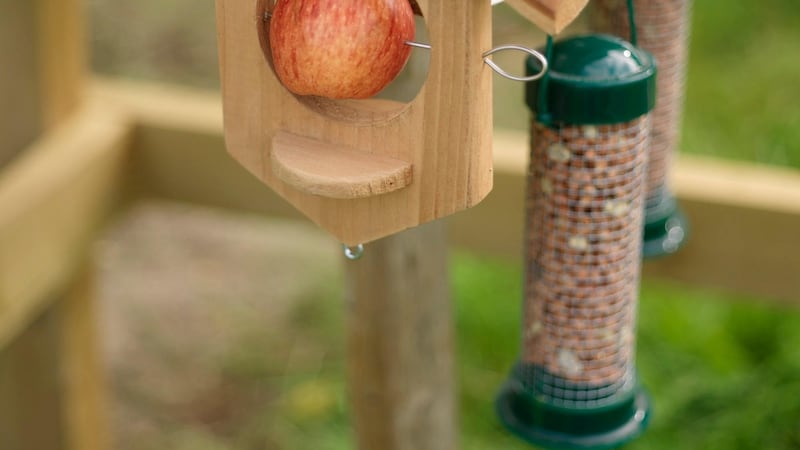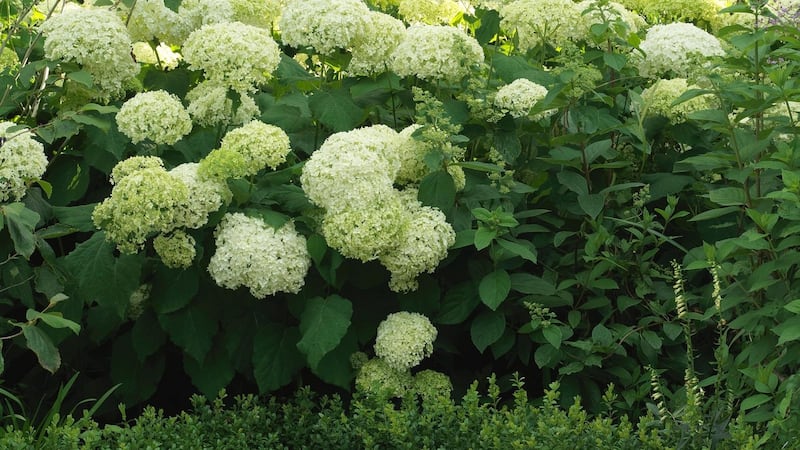If this were – deep sigh – a typical spring, then many Irish gardens would already be awash with the flowers and foliage of some of our loveliest woodland plants.
Examples include bluebells, dog-violets, primulas, dainty wood anemones, epimedium, trout lilies (erythronium) with their strangely mottled leaves and daintily reflexed blooms, trillium, pulmonaria, corydalis, brunnera, snake’s head fritillary and dicentra as well as many larger, shrubby types including azalea, rhododendron, fothergilla, halesia, enkianthus, camellia and magnolia.
That so many of them are only just coming into bloom can be blamed on this year’s cruel, long winter. Yet this only makes these pretty woodlanders’ belated emergence all the more precious, as more than any other group of plants their flowers are the first true harbingers of spring.

But first let’s talk about the term “spring woodlanders”, which can put many gardeners off (especially those with small, urban plots) in the mistaken belief that these plants have no place anywhere other than in a large woodland garden. Not true. In fact, their ability to grow happily in the cool, dappled summer shade cast by large deciduous trees, shrubs and even tall, summer-flowering perennials makes them an excellent choice for small, shady town gardens where growing space is tight and available light is limited.
Or indeed for any garden where large deciduous trees and shrubs cast summer shade. This is because of their unique ability to capitalise on that oh-so-brief springtime window of opportunity when both moisture and sunlight still easily penetrate to the woodland “floor”, allowing these plants to burst into early growth. The result is that by the time large deciduous trees and shrubs have come into full and hearty leaf, most spring woodlanders have already finished flowering and are busy setting seed.
Thirsty root systems
Which is not to say that they’ll happily grow in a dry, starved, compacted soil, just inches away from the dense, thirsty root systems of your garden’s most mature trees and shrubs. Few plants would. But if you can give them a cool, humus-rich, moisture-retentive but well-drained soil enriched with annual autumn mulches of home-made compost or home-made leaf mould or well-rotted garden shreddings (or a mixture of all three), then the smaller kinds mentioned above will grow very happily beneath their leafy canopy.

To help them along, it’s well worth using the technique known as “skirt-lifting” or “crown-‘lifting” to reduce the dense, leafy canopy of some of your garden’s established mature trees and shrubs, thus allowing dappled sunlight and rainwater to gently filter through to ground level. To lift the canopy in this way, use a pruning saw to selectively remove some of the lower branches, a relatively straightforward job that can be carried out at almost any time of year (late summer to early winter is generally best) but will make a world of difference to the growing conditions. Just be careful not to overdo it to the point where you accidentally but irrevocably destroy the silhouette and symmetry of an established plant.
As for the larger, shrubby kinds of spring woodlanders, they also relish these kinds of growing conditions as long as you can offer them a neutral to acid soil, making them perfect for a cool, shady border, or for inter-planting among already well-established trees and shrubs, or to use as free-standing specimen plants.
Over time, they’ll slowly add yet another layer of spring interest to your garden while many also have handsome evergreen foliage or provide excellent autumn colour. Where space is tight or soil conditions aren’t suitable, some will also grow very contentedly in a large pot or tub filled with ericaceous compost. Examples include the more compact kinds of azaleas, rhododendrons and camellias, which are widely available from good Irish garden centres.

To see many of these plants at their floweriest and freshest best, try to pay a visit to some of Ireland's loveliest woodland gardens in the coming weeks. Examples include Jimi Blake's west Wicklow garden, Hunting Brook, which re-opens to the public tomorrow with a guided tour of the gardens by Jimi at 2pm.
Meandering paths
Its shady forest glen plunges steeply down to a chattering mountain stream accessible by meandering paths and is filled with a huge variety of choice woodland species. Many were collected by Jimi on his travels abroad, including different species/varieties of erythronium, trillium, scilla, corydalis, and cardamine that are all now bursting into flower (huntingbrook.com).
Also in Co Wicklow, the historic gardens of both Kilmacurragh (botanicgardens.ie) and Mount Usher Gardens (mountushergardens.ie) are home to magnificent collections of spring woodlanders including sheets of bluebells, rare rhododendrons, giant cardiocrinum lilies and the lovely Irish woodland anemone, anemone nemorosa "Robinsoniana", named after the great Irish gardener William Robinson.

In Co Waterford, Mount Congreve (mountcongreve.com) is justly celebrated for its large and exceptionally beautiful woodland gardens, which were created by its late owner, Ambrose Congreve and are now managed with the support of Waterford City & County Council. In Co Down, you'll find the magnificent spring woodland gardens of Mount Stewart and Rowallane, both known for their outstanding collections of magnolias and rhododendrons (nationaltrust.org.uk).
On the Beara peninsula in Co Kerry, are the extraordinary woodland gardens of Derreen (derreengarden.com) whose historic collection of woodland plants includes some brought back by intrepid Victorian plant-hunters from the Himalayas, while for a contemporary take on woodland planting, visit Caher Bridge near Fanore in County Clare, the exquisite creation of distinguished plantsman Carl Wright (facebook.com/CaherBridgeGarden/).
This Week in the Garden…

Bird feeders during cold spring
This year’s exceptionally late, cold spring has been very difficult for garden birds and well as for pollinating insects dependent on the emergence of flowers for food and suitable host plants for their larvae.
Help them by keeping bird feeders clean and well-stocked with a range of suitable foodstuffs and by allowing plenty of pollinator-friendly, wild plants (examples include nettles, dandelions, clover, celandines, ivy and wild grasses) to grow in the wilder corners of your garden or allotment.
If you’re planning a spring clean of your garden, go very gently as the exceptionally late, cold spring will also have delayed the emergence of many pollinating insects and hibernating/dormant garden wildlife, many of which will still be overwintering in old plant material.
Seeding
Soil conditions in many gardens and allotments are still unusually cold and wet for this time of year, making it difficult for seed to germinate successfully. To help it along, temporarily cover any freshly-sown seed with a layer of horticultural fleece spread loosely on top of it to create a protected micro-climate and raise the temperature by as much as 5°C.
Keep this in place by pegging it down or covering the edges with a shallow ribbon of soil. The emerging seedlings will grow quite happily under the fleece until conditions improve (just make sure it’s slack enough that they can easily push up under it) but do make sure to take precautions against slugs.

Deadheading your hydrangeas
If March’s poor weather prevented you from deadheading your hydrangeas, then there’s still time to get the loppers/secateurs out. For best results, cut each flowering stem back to the first pair of large, strong buds. While you’re at it, remove a few of the oldest , thickest stems as well, cutting these out at ground level to prevent the plant from becoming congested.
Dates for your diary
– RHSI Floral Art Demonstration by Helena Morrissey, Wednesday April 18th, 8.00pm at Airfield Estate, Dundrum. RHSI Members free, non-members €10, students €5.
– Thursday, April 19th (8pm), Edmund Rice Centre, Barrack Street, Waterford, "The Education of a Gardener", an illustrated talk by Fionnuala Fallon on behalf of Waterford Regional Garden Club.
– From Friday, April 20th, June Blake Gardens, Tinode, Blessington, Co Wicklow, "A Month of Tulips", celebrating the tulip season in full flower in this contemporary Wicklow garden with free walks and tours every Sunday (2.30pm) by owner June Blake, juneblake.ie.
– From Saturday, 21st April until Sunday 6th May (2pm-5pm), The Bay Garden, Camolin, Co Wexford, "Mr Middleton's Tulip Extravaganza" with over 13,000 tulips on display and short talks every day (3pm) on growing tulips, see thebaygarden.com.











